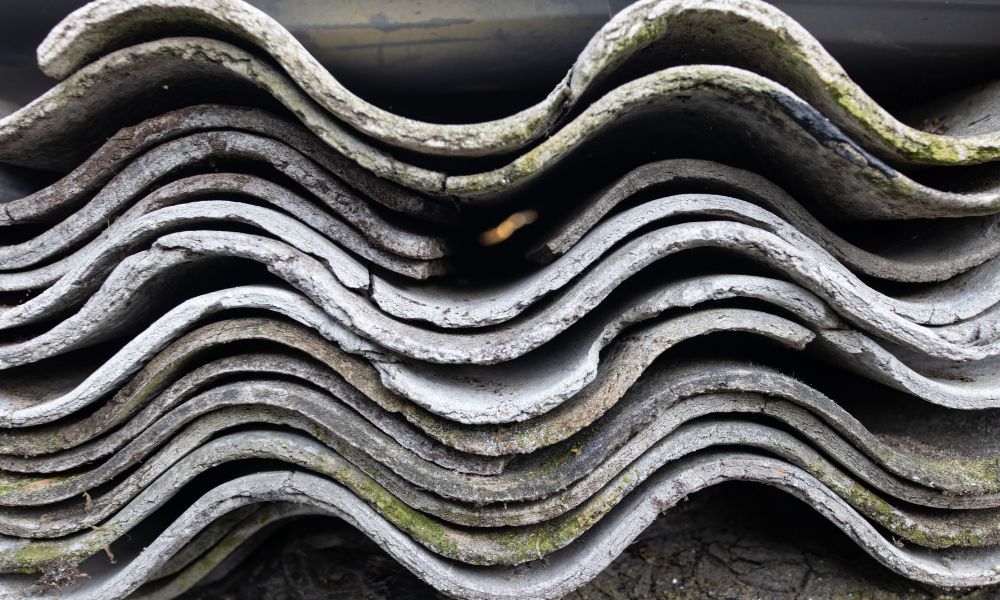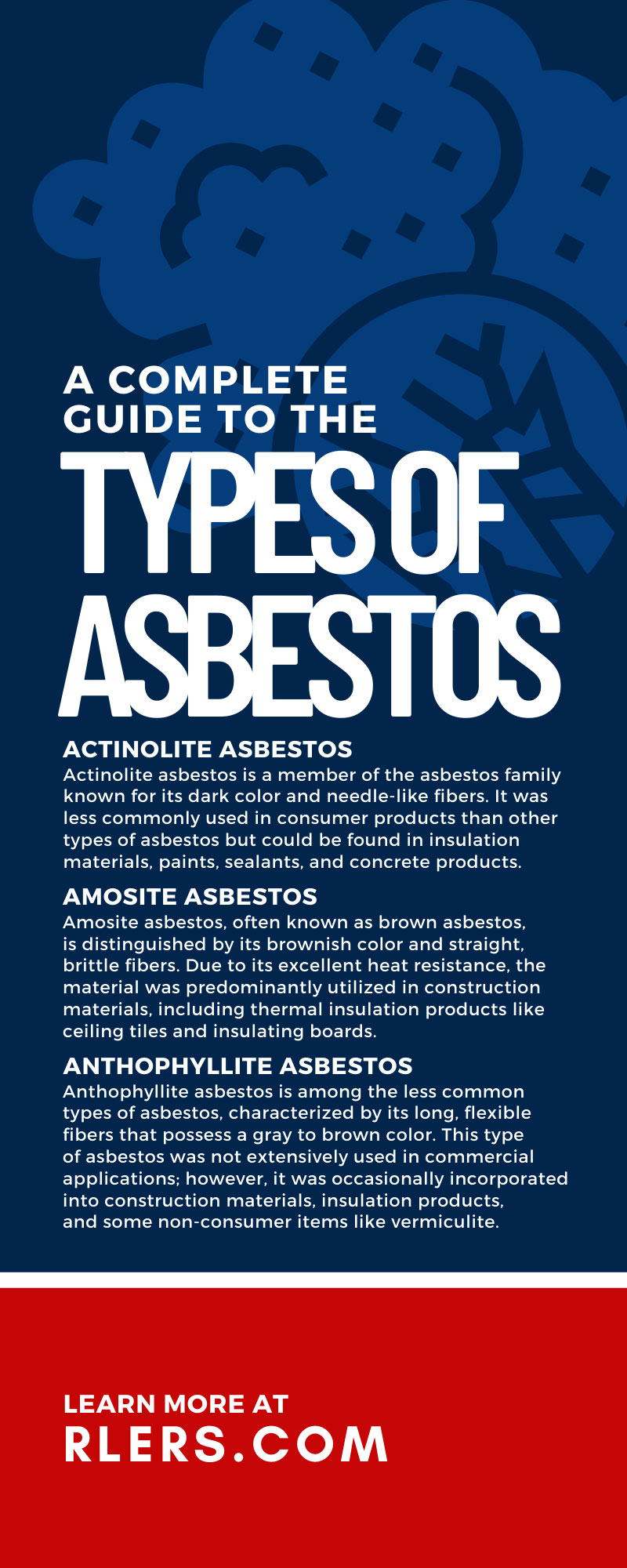
Does the word “asbestos” send shivers down your spine? If you’re acquainted with the infamous reputation of this construction material, you know the dangers and safety concerns that arise when you find it in your home or business. The effects of asbestos are well-documented, and understanding the different types, what makes them unique, and how to handle each kind safely can help you better protect yourself and others. Knowledge is power when it comes to asbestos, and acting responsibly is paramount. Here is our complete guide to the six different types of asbestos.
Understanding Asbestos
Asbestos is a group of naturally occurring fibrous minerals admired historically for their strength, insulating properties, and resistance to heat, fire, and chemicals. These fibers are microscopic, making them difficult to detect without specialized equipment. Though their characteristics once made them a staple in various construction and manufacturing industries, it’s now known that prolonged inhalation of asbestos fibers can lead to serious health problems, including lung cancer, mesothelioma, and asbestosis. This realization led to stringent regulations on asbestos use and handling worldwide.
The 6 Types of Asbestos
Actinolite Asbestos
Actinolite asbestos is a member of the asbestos family known for its dark color and needle-like fibers. It was less commonly used in consumer products than other types of asbestos but could be found in insulation materials, paints, sealants, and concrete products. Actinolite is characterized by its high flexibility and resistance to heat, making it useful in certain industrial applications.
Amosite Asbestos
Amosite asbestos, often known as brown asbestos, is distinguished by its brownish color and straight, brittle fibers. Due to its excellent heat resistance, the material was predominantly utilized in construction materials, including thermal insulation products like ceiling tiles and insulating boards. Amosite’s durable nature also made it attractive for use in cement sheets and pipe insulation.
Anthophyllite Asbestos
Anthophyllite asbestos is among the less common types of asbestos, characterized by its long, flexible fibers that possess a gray to brown color. This type of asbestos was not extensively used in commercial applications; however, it was occasionally incorporated into construction materials, insulation products, and some non-consumer items like vermiculite.
Chrysotile Asbestos
Chrysotile or white asbestos stands out as the most common type of asbestos. It features thin, flexible fibers that form a spiral, often leading it to be described as curly. This type of asbestos was extensively used in various applications, including roofing materials, brake linings, and cement production. Chrysotile fibers are unique because they wrap around themselves, which some studies suggest may make them less harmful than other forms of asbestos. However, it’s imperative to understand that no form of asbestos is safe.
Crocidolite Asbestos
Crocidolite asbestos, commonly known as blue asbestos, is recognized for its fine, silky fibers and distinct blue color. This type of asbestos was less frequently used than other forms, but when employed, it primarily found its way into high-temperature resistant materials, steam engine insulation, and some spray-on coatings. Crocidolite is considered one of the most hazardous forms of asbestos because you can easily inhale its extremely fine fibers, which penetrate deep into the lungs.
Tremolite Asbestos
Tremolite asbestos is another member of the asbestos family, displaying colors that range from white to dark green. Unlike other types of asbestos, tremolite was not typically used commercially on its own but was often present as a contaminant in other asbestos-containing materials, like chrysotile products or vermiculite insulation. This type of asbestos consists of sharp, needle-like fibers that make it particularly dangerous when inhaled. These fibers can penetrate deep into lung tissue, contributing to serious health conditions.
The Two Mineral Families in Asbestos
Asbestos is classified into two distinct mineral families, serpentine and amphibole, each exhibiting unique characteristics.
Serpentine
Serpentine asbestos is comprised solely of chrysotile. Chrysotile’s flexibility and resistance to heat have historically made it a popular choice for a wide range of products.
Amphibole
Amphibole asbestos, in contrast, includes several types, such as amosite (brown asbestos), crocidolite (blue asbestos), tremolite, actinolite, and anthophyllite. Amphibole fibers are straight and needle-like. These characteristics make amphibole asbestos much more hazardous than serpentine when inhaled due to its ability to lodge deeper into the lungs.
The distinction between these two families lies in their crystalline structures, which influence their usage, handling, and the level of health risk they pose. While the unique benefits of each type led to widespread use in various industries, the discovery of the severe health risks associated with prolonged exposure has necessitated a more cautious approach to handling asbestos, regardless of the type. Understanding these differences is crucial for effective risk assessment and management when dealing with materials that may contain asbestos.
Are All Types of Asbestos Dangerous?
All types of asbestos are considered dangerous. While the degree of hazard may vary among the different types due to their physical characteristics, exposure to any asbestos fibers presents serious health risks. Inhaling these microscopic fibers can lead to severe respiratory diseases, including asbestosis, lung cancer, and mesothelioma, a rare and aggressive cancer.
It’s important to note that no safe level of asbestos exposure has been identified. Hence, all types of asbestos should be handled with the utmost care by professionals according to proper safety protocols to minimize health risks.
What To Do When You Find Any Type of Asbestos in Your Home or Business
Discovering asbestos in your home or business can be alarming. The first step is to avoid disturbing the material, as this can release asbestos fibers into the air. It’s essential to act swiftly and with caution. The safest approach is to contact a professional asbestos abatement company.
Asbestos abatement specialists are trained in identifying, containing, and safely removing asbestos materials while adhering to strict safety protocols and regulations. Attempting to remove asbestos without the appropriate expertise and equipment can pose severe health risks to the individual performing the removal and others in the vicinity.
Professional removal ensures asbestos is handled properly, minimizing the risk of exposure to these dangerous fibers. In the long run, investing in professional asbestos abatement services protects the health and safety of all occupants and visitors to your property, making it a critical step when any type of asbestos is found.
Our complete guide to the six types of asbestos has provided a thorough overview of the varied types of asbestos, their applications, and the inherent risks associated with them. This guide aims to give you the knowledge needed to identify potential asbestos hazards in your surroundings, understand their implications, and take the appropriate steps toward ensuring safety. When dealing with asbestos, precaution and professional expertise are your best allies!


